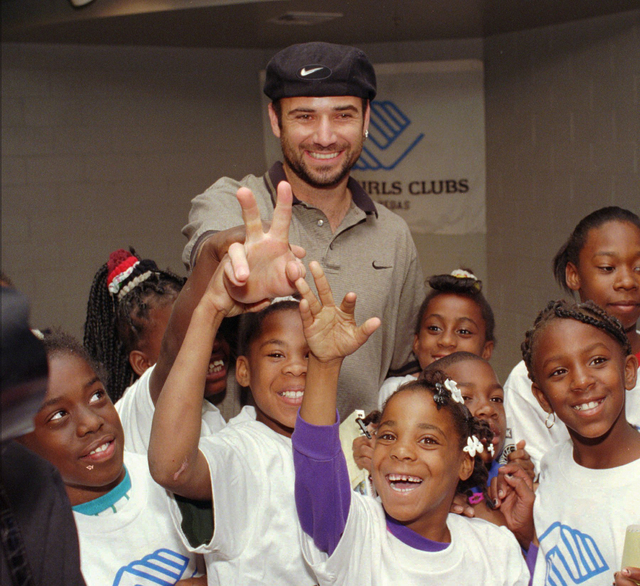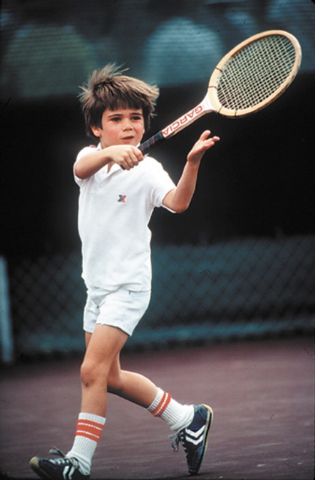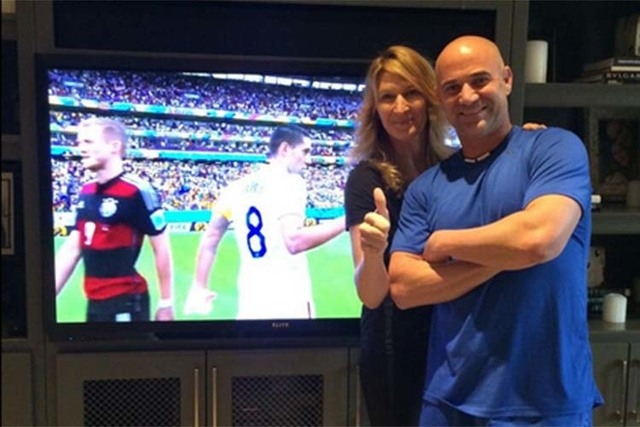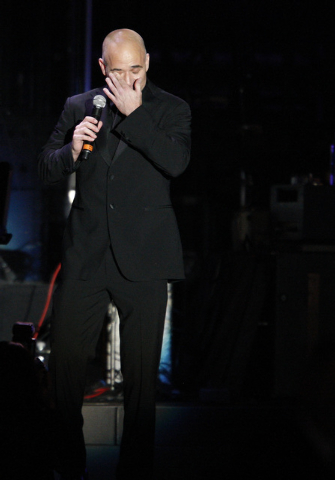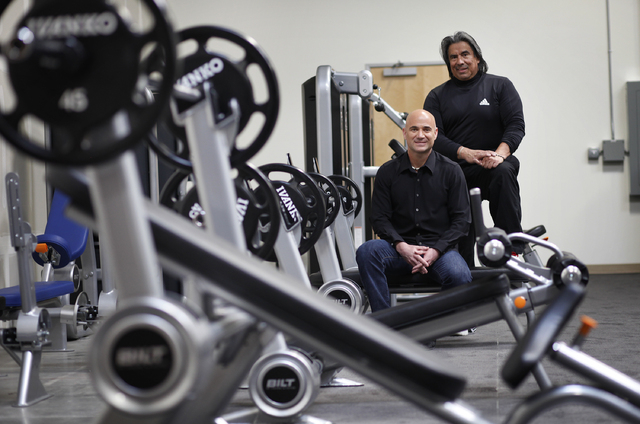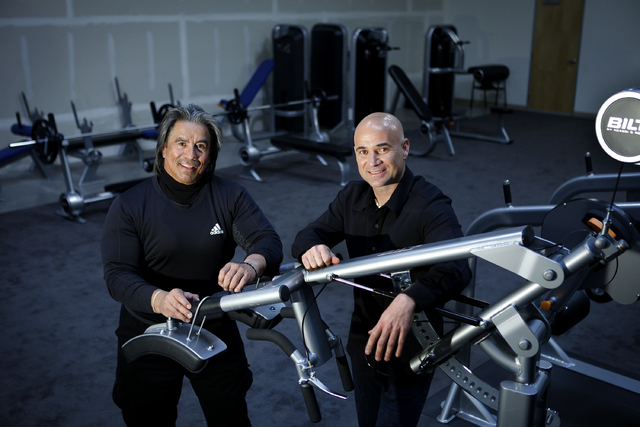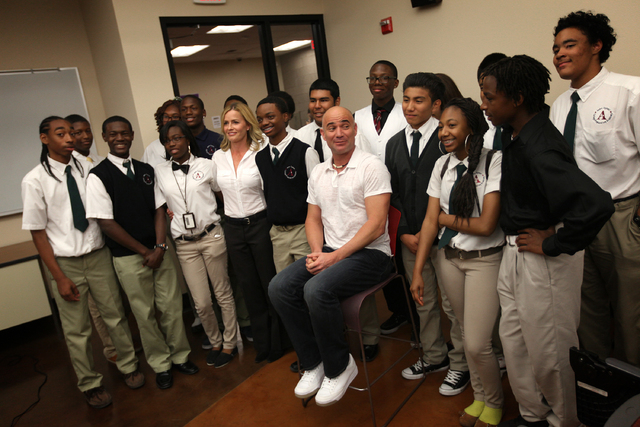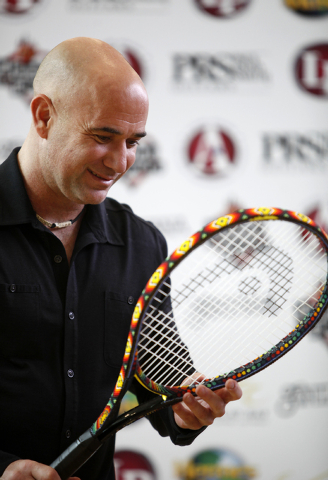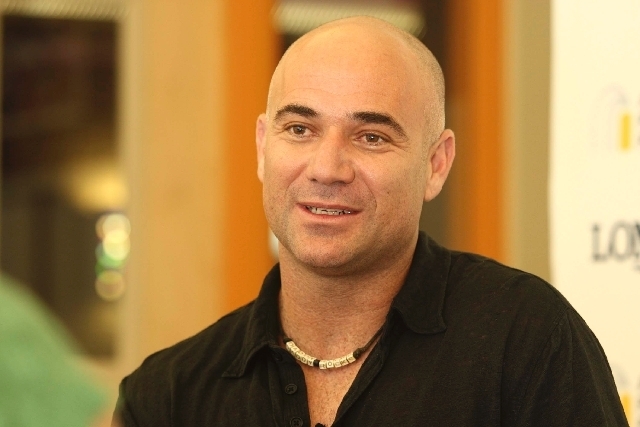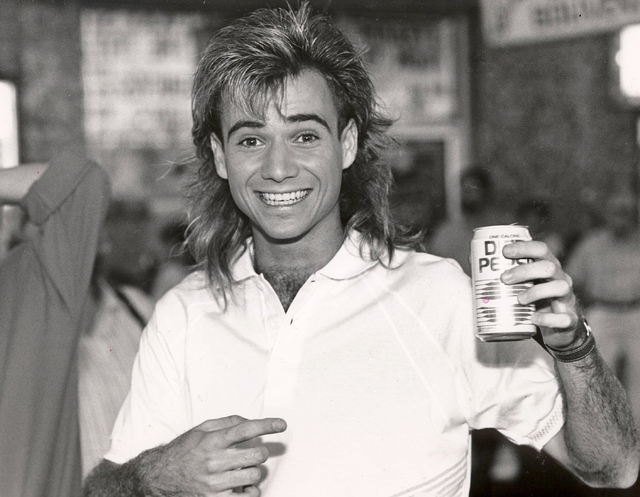Agassi is Nevada-born champion on, off court
Editor’s Note: Nevada 150 is a yearlong series highlighting the people, places and things that make up the history of the state.
There are the 60 career victories in singles. There are the eight Grand Slam titles and the Olympic gold medal and the three Davis Cup wins. There are the millions of dollars he made on the tennis court and millions more in endorsements as a pop culture figure in the 1990s.
But what really distinguishes Andre Agassi and what makes him one of the most prominent figures in Nevada sports history has absolutely nothing to do with tennis.
Where the Las Vegas native was once an elite performer on the court en route to induction into the International Tennis Hall of Fame in 2011, the now-44-year-old Agassi is better known today for his philanthropic efforts, having raised hundreds of millions of dollars for education, not only in Las Vegas, where he was born and raised, but across the country.
Agassi also helped build a Boys and Girls Club in West Las Vegas that bears his name and serves as a safe haven for thousands of neighborhood kids since its opening in 1997.
It’s the kind of story you couldn’t have dreamed of conjuring up back in the late 1980s and into the ’90s. There he was, the kid with the flowing mullet, the denim shorts and the neon colors whipping cross-court backhands past startled opponents and winning the hearts of millions of fans, particularly women. Barbra Streisand courted him. Brooke Shields married him. Yet there was a void in Agassi’s life, and only in the past 13 years has that void been filled.
A PARTNER AND A PURPOSE
He found true love in fellow tennis great Steffi Graf, one of the greatest female players of all time. She had walked in Agassi’s shoes. They married in 2001, have two children, live as normal a life in Summerlin as one can expect from a regally bred sports couple. There are Little League games and dance recitals. They shop at the grocery store and wait in line at Starbucks, just like everyone else.
Agassi also found the meaning of social commitment. Long before he became a father, Agassi realized the importance of an education. Though he never went to college, Agassi knew only a very special few had the talent to make it as a professional athlete. And when he opened Andre Agassi College Preparatory Academy in 2001, it was with the idea that stars can be made in the classroom and success was attainable beyond sports.
His school, which would grow into a full K-12 campus, became the model for cities to copy. And because Agassi was a dreamer, he wasn’t afraid to just settle for one school. Why not others elsewhere?
In a 2011 interview, Agassi explained why he took up the cause he champions.
“Education was always something that I felt a lack of in my life,” he said. “I was lucky enough to be decent at something and to be able to take my teachers on the road with me, so to speak. And the thought always occurred to me: What about all those children who don’t have the luxury of falling back on a sport that they can thrive in? What happens to their life? Where do they end up? And unfortunately they end up in rough places. Gangs. Jails. Hospitals. And morgues. When I see that, I realized I needed to give these children the tools to have a future of their own choosing. That’s what led me into education.”
Since its inception in 1994, the Andre Agassi Foundation for Education reports it has raised more than $175 million for the school in Las Vegas and education initiatives nationwide. Much of the money has come from the star-studded Grand Slam for Children fundraising event, which has attracted such celebrity performers as Elton John and Robin Williams.
Agassi’s efforts have not gone unnoticed.
“Andre backed up his tennis skills with a strong connection with the fans, entertaining them in a way few ever have,” tennis legend and fellow Hall of Famer Billie Jean King said. “Off the court, he has a sense of responsibility that transcends tennis. Andre has a deep commitment to giving back and to make a difference in the lives of others.”
RISE AND FALL AND RISE AGAIN
Still without tennis, Agassi wouldn’t have the celebrity vehicle needed to drive the fundraising and accomplish his goals. So any conversation of Agassi must ultimately come back to the court. It is well-documented how Agassi’s father, Mike, had him hit countless tennis balls every day from the time he was a toddler. As a pre-teen, Agassi was already being hyped as a star in American tennis, which had been through an amazing era with Arthur Ashe, Stan Smith, Jimmy Connors and John McEnroe. It was up to the new generation — Pete Sampras, Jim Courier, Todd Martin, Michael Chang and Agassi — to produce the next wave of American stars.
Agassi turned pro in 1986 and, at age 16, finished the year ranked in the Top 100 at No. 91. The following year, he won his first pro tournament and ended 1987 ranked No. 25. In 1988, he won five tournaments and surpassed $1 million in career earnings before he was old enough to celebrate by buying himself a drink.
He was on his way. He would be part of the U.S. team that won the Davis Cup in 1990 and again in 1992. His Grand Slam title run began 1992 when he won Wimbledon. Agassi still calls it one his most cherished moments in tennis. He would win the U.S. Open in 1994, then the Australian Open in 1995, a year that also saw him top the rankings and help win one last Davis Cup for the U.S.
In 1996, he represented the United States in the Olympics at Atlanta and won the gold medal in singles. But things began to sour for Agassi. He had been battling wrist issues, and the pain compromised his ability to perform. He played just 24 times that year, and his marriage to Shields had begun to falter. By 1997, he dropped to No. 141 in the world rankings and was playing in challenger events in an attempt to get back to the top.
He bounced back in 1998, winning five tournaments and earning ATP Tour honors as Comeback Player of the Year. But that was only the warm-up for what would be an even greater year in 1999, when he rallied from two sets down to win the French Open and complete his career Grand Slam. Later that year, he also won the U.S. Open, coming back from a set down to beat Martin. By year’s end, he was back at the top, ranked No. 1.
Agassi would win three more Australian Open titles over the next four years and would finish with eight Grand Slam victories. And though he was starting to slow down because of age and injury, he still posted winning records in 2002 (53-12), 2003 (47-10), 2004 (37-13) and 2005 (38-12).
His 2005 season included an amazing run to the U.S. Open finals, where he defeated fellow American James Blake in an unforgettable quarterfinal that went five sets and lasted until 2 a.m. He would lose to Roger Federer in four sets in the final.
FAREWELL AND AN ‘OPEN’ BOOK
Agassi’s farewell to competitive tennis came at the 2006 U.S. Open. His back had been giving him trouble the last couple of years, but he was trying to recapture the old magic at Flushing Meadows one final time. His run ended in the third round, when he lost in four sets to Benjamin Becker.
After the match, Agassi delivered an emotional speech to the sellout crowd at Arthur Ashe Stadium and walked off the court to a five-minute standing ovation — tennis’ loss, Las Vegas’ gain.
In 2009, Agassi published his autobiography, “Open,” which was just that — an open look at his life. He talked about his love-hate relationship with tennis, his failed relationships, his brief dalliances with drugs and how he managed to save his career while he discovering how to grow as a person. The book landed him at No. 1 again, this time on The New York Times best-seller list.
At his 2011 Hall of Fame speech, Agassi told the crowd of fans, family, friends and tennis contemporaries: “Being emotionally overwhelmed by the experience was the most fun for me. I’ll always remember how clear the road of my life has been as I looked out into the audience and saw those who shared the experience with me.
“I know what it’s like to be at rock bottom. It’s not all that bad a place to be because it forces you to make a decision whether you should continue on or quit. I was going to quit. But as I have been known to do, I changed my mind, and that turned out to be the right decision.”
Contact reporter Steve Carp at scarp@reviewjournal.comn or 702-387-2913. Follow @stevecarprj on Twitter.









